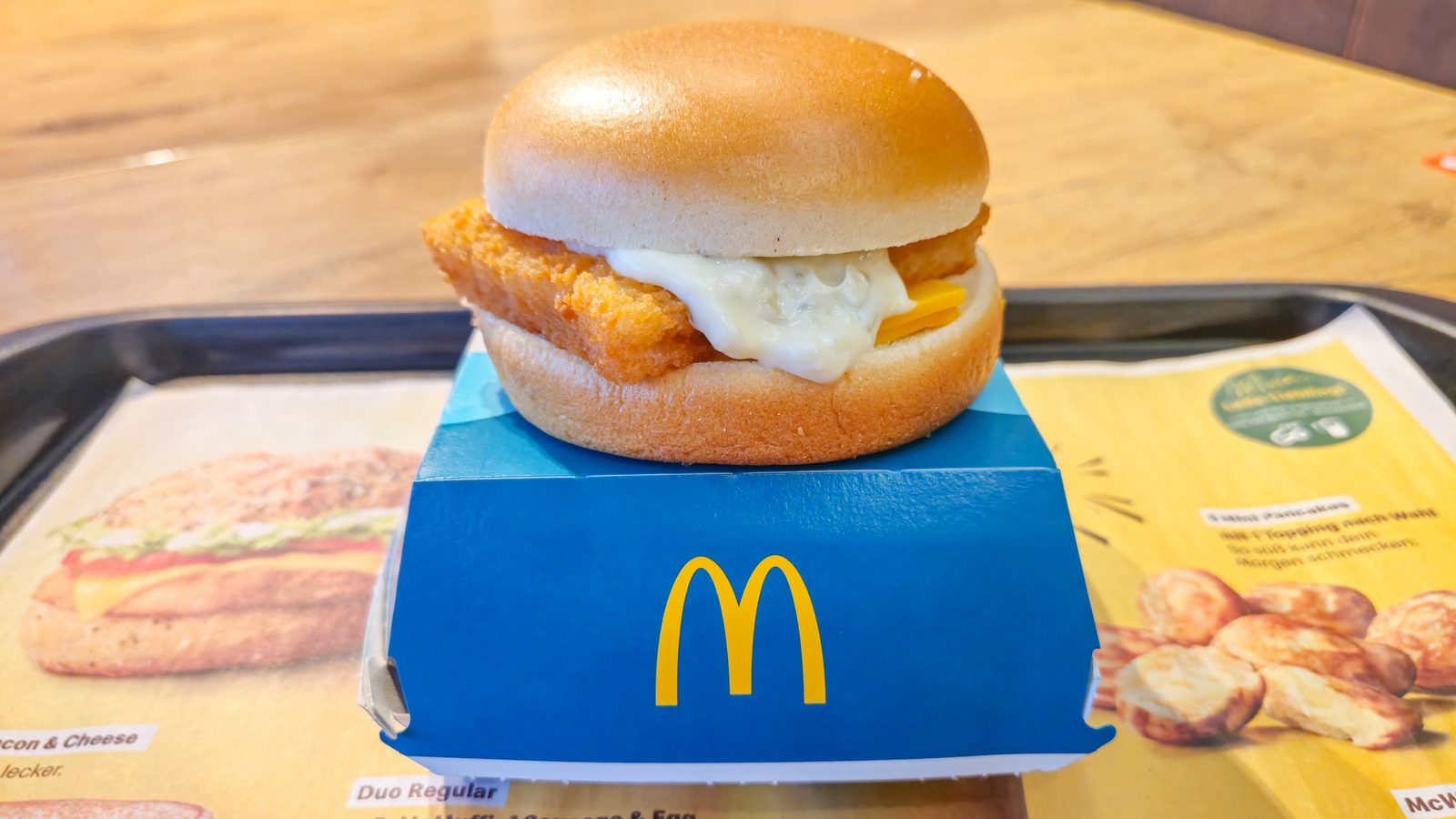McDonald’s Filet-O-Fish Has This Impressive Certification – Chowhound

McDonald’s Filet-O-Fish and Sustainable Seafood Certification
The iconic McDonald’s Filet-O-Fish sandwich, featuring a crisp breaded fish patty nestled between a buttermilk bun with tartar sauce, carries an important sustainability certification. On the packaging, a blue label with a fish logo indicates the Marine Stewardship Council (MSC) sustainable seafood certification. This certification signifies that the Alaskan pollock used in the sandwich is sourced sustainably.
Marine Stewardship Council (MSC) and Its Role
The MSC is a global organization dedicated to preserving ocean ecosystems and ensuring seafood remains a sustainable resource. It operates a fishery program aimed at reducing overfishing and promoting responsible fishing practices. Fisheries that successfully complete the program gain MSC certification, granting them access to secure markets and other benefits.
The MSC certification aligns directly with the United Nations Sustainable Development Goals (SDGs), particularly SDG 14: Life Below Water, which encourages global cooperation to conserve and sustainably use the oceans, seas, and marine resources. Despite its importance, SDG 14 remains one of the most challenging goals to achieve worldwide.
The MSC Fisheries Certification Program
Eligibility and Assessment Process
The MSC certification process involves a comprehensive assessment conducted by accredited independent certifiers known as conformity assessment bodies (CABs). The program is inclusive, allowing any fishery—regardless of size—to apply. Eligible fisheries include:
- Single- and multi-species fisheries
- Fishing methods such as trawling, longlining, hand raking, and pots
- Freshwater and marine environments
- Inshore and offshore operations
- Demersal, pelagic, and enhanced fisheries (with specific treatment requirements)
Certification Timeline and Criteria
The certification process typically takes between 12 to 18 months and costs range from $15,000 to $120,000. Fisheries are evaluated based on three core principles:
- Stock Sustainability: Ensuring fish populations are maintained at healthy levels.
- Ecosystem Impacts: Minimizing negative effects on the marine environment.
- Effective Management: Demonstrating robust fishery management practices.
These principles are measured against 25 performance indicators. Fisheries must achieve a minimum score of 60 out of 100 to pass, though passing fisheries may be subject to additional conditions before certification is granted.
Post-Certification Benefits and Responsibilities
Once certified, fisheries join the MSC-certified fishery network, gaining access to new markets and increased profitability opportunities. Certified fisheries are required to undergo regular audits to maintain compliance and uphold sustainable practices.
Emphasizing Sustainable Development Goals (SDGs)
The MSC certification exemplifies a practical contribution to achieving the United Nations SDGs, especially:
- SDG 14: Life Below Water – Promoting sustainable use of oceans and marine resources.
- SDG 12: Responsible Consumption and Production – Encouraging sustainable sourcing and consumption patterns.
- SDG 17: Partnerships for the Goals – Demonstrating collaboration between organizations, governments, and businesses to achieve sustainability.
By choosing MSC-certified seafood, companies like McDonald’s support sustainable fisheries, helping to protect marine biodiversity and promote long-term ecological balance.
1. Sustainable Development Goals (SDGs) Addressed
- SDG 14: Life Below Water
- The article explicitly mentions SDG 14, which focuses on conserving and sustainably using the oceans, seas, and marine resources.
- The Marine Stewardship Council (MSC) certification aligns with this goal by promoting sustainable fishing practices and reducing overfishing.
2. Specific Targets Under the Identified SDGs
- Targets under SDG 14 relevant to the article:
- Target 14.4: By 2020, effectively regulate harvesting and end overfishing, illegal, unreported and unregulated fishing and destructive fishing practices and implement science-based management plans to restore fish stocks in the shortest time feasible.
- Target 14.7: By 2030, increase the economic benefits to Small Island developing States and least developed countries from the sustainable use of marine resources, including through sustainable management of fisheries, aquaculture and tourism.
3. Indicators Mentioned or Implied in the Article
- Indicators related to SDG 14 targets:
- The article mentions that fisheries are scored on three principles: stock sustainability, ecosystem impacts, and effective management.
- It refers to 25 different performance indicators used during the MSC certification assessment, with a scoring scale from 0 to 100, where a minimum score of 60 is required for certification.
- These indicators imply measurement of fish stock status, ecosystem health, and management effectiveness, which correspond to official SDG 14 indicators such as:
- 14.4.1 Proportion of fish stocks within biologically sustainable levels
- 14.2.1 Proportion of national exclusive economic zones managed using ecosystem-based approaches
- Regular audits mentioned in the article imply ongoing monitoring and reporting, which are essential for tracking progress against these indicators.
4. Table of SDGs, Targets, and Indicators
| SDGs | Targets | Indicators |
|---|---|---|
| SDG 14: Life Below Water |
|
|
Source: chowhound.com








